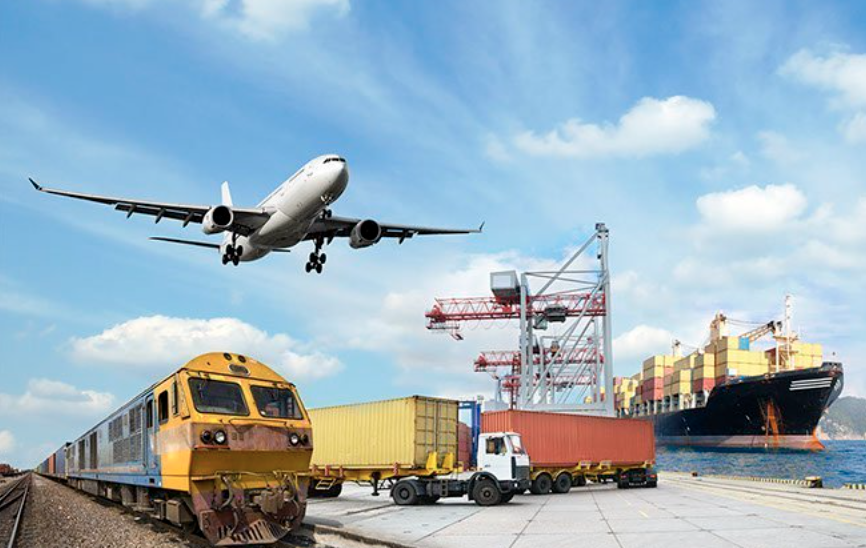The Role of Multi-Modal Logistics in India’s Supply Chain Revolution

India’s logistics network is often referred to as the lifeline of the economy, supporting trade, commerce, and industry across the country. With its vast geography, diverse terrain, and growing economy, India has embraced multimodal logistics to ensure seamless connectivity between production hubs, markets, and global trade routes.
Multimodal logistics integrates multiple modes of transport—road, rail, air, and sea—into a cohesive system. This approach reduces costs, improves efficiency, and ensures the timely delivery of goods across the country. Let’s dive into how India’s multimodal logistics network functions, its challenges, and its promising future.
1. What Is Multimodal Logistics?
Multimodal logistics refers to the coordinated use of multiple modes of transport under a single contract. For example:
- Goods may be transported by rail from an inland hub to a port.
- From the port, the shipment moves via sea freight to a coastal city.
- Finally, goods are delivered via road to their destination.
Why Multimodal Logistics?
- Cost Efficiency: Each mode of transport is used for what it does best (e.g., rail for bulk goods, road for last-mile delivery).
- Reduced Transit Times: Integrated networks avoid bottlenecks and ensure faster delivery.
- Sustainability: Shifting goods from road to rail or sea reduces carbon emissions.
2. Key Components of India’s Multimodal Logistics Network
a. Road Transport
India’s road network spans 6.2 million kilometers, making it the second-largest road network in the world. National highways account for 2% of the network but handle 40% of the traffic, underscoring their importance in connecting major cities and ports.
- Role: Last-mile delivery, connectivity to rural areas, and access to manufacturing hubs.
- Challenge: Road transport is time-intensive and accounts for 60% of logistics costs, largely due to traffic congestion and fuel expenses.
b. Rail Transport
Indian Railways operates the world’s fourth-largest rail network, with a route length of 68,000 kilometers.
- Dedicated Freight Corridors (DFC): These are specialized rail lines exclusively for freight, reducing congestion and enabling faster transport.
- Key Sectors Served: Coal, steel, cement, and containerized cargo.
Insight: Rail is 30% cheaper than road for bulk transport but currently handles only 27% of India’s freight traffic.
c. Maritime Transport
India has 12 major ports and over 200 minor ports, handling 95% of the country’s trade volume by weight.
- Top Ports: Jawaharlal Nehru Port Trust (JNPT), Mundra, and Chennai.
- Role in Multimodal Logistics: Ports are gateways for imports/exports and connect seamlessly to rail and road networks.
d. Air Freight
India’s air freight sector is growing rapidly, with 126 operational airports and over 3.6 million tons of air cargo handled annually.
- Role: Ideal for high-value, time-sensitive goods like pharmaceuticals and electronics.
- Challenge: Air freight costs are 3-4 times higher than road or rail.
3. Challenges in India’s Multimodal Logistics Network
While India’s multimodal logistics network has made significant progress, there are several hurdles to overcome:
- Infrastructure Gaps: Inadequate integration between modes of transport leads to delays and inefficiencies.
- High Costs: Logistics costs in India are 14% of GDP, compared to the global average of 8-10%.
- Regulatory Bottlenecks: A lack of streamlined processes for cargo movement across states and ports hampers efficiency.
- Technology Adoption: Limited use of digital platforms for tracking and monitoring shipments affects transparency.
- Environmental Concerns: The heavy reliance on road transport increases emissions and fuel consumption.
4. Innovations and Initiatives Driving Growth
To address these challenges, India is undertaking transformative steps to improve its multimodal logistics network:
a. PM Gati Shakti Plan
This national master plan integrates infrastructure development across railways, roads, ports, and airports, ensuring efficient logistics connectivity.
- Goal: Reduce logistics costs to 8% of GDP by 2030.
- Impact: Better integration between modes of transport and faster project execution.
b. Dedicated Freight Corridors (DFCs)
The Western and Eastern DFCs are game changers for rail logistics, enabling double-stacked containers and faster freight movement.
c. Inland Waterways
India is developing 111 National Waterways, offering an eco-friendly and cost-effective alternative for transporting bulk cargo.
d. Digitization in Logistics
- Platforms like FASTag streamline toll payments.
- E-way bills ensure seamless movement of goods across states.
e. Private Sector Involvement
Logistics parks and warehousing facilities developed by private players are improving last-mile delivery and storage capabilities.
5. The Future of Multimodal Logistics in India
The future of India’s logistics lies in seamless multimodal integration. With increasing investments in infrastructure, technology, and sustainability, India’s supply chain is poised for a transformation:
- Sustainability Focus: Shifting cargo to rail, water, and coastal shipping will reduce carbon emissions.
- Technology-Driven: AI, IoT, and real-time tracking will enhance visibility and efficiency.
- Global Connectivity: Improved ports and air freight infrastructure will strengthen India’s position in global trade.
Conclusion: Connecting India’s Future
India’s multimodal logistics network is a testament to the country’s commitment to building a world-class supply chain. By integrating road, rail, sea, and air transport, India is not only reducing costs but also enhancing its competitiveness on the global stage.
As the country addresses challenges and embraces innovation, the dream of an efficient, sustainable, and seamless logistics network is well within reach.
